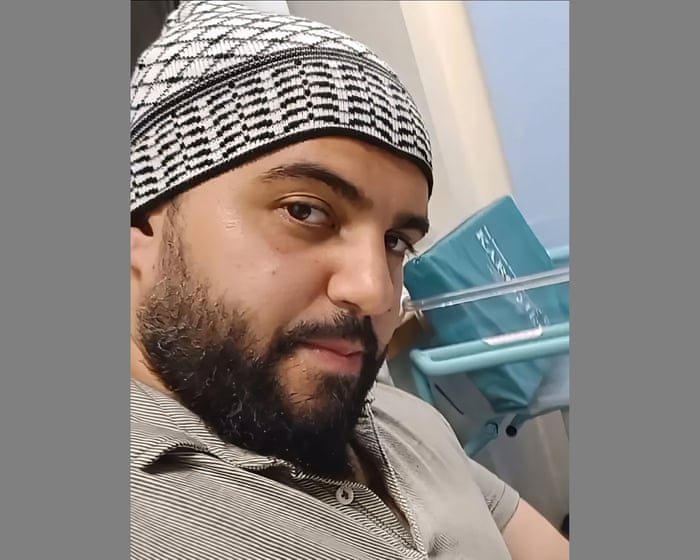Behind the altar of a chapel in northern Rome, a transparent safe is set into the wall, containing relics of Carlo Acutis. Among them are a splinter from his wooden bed, a piece of his jumper, and a fragment of the sheet that covered him after he died. Locks of his hair are also displayed in churches across Rome and elsewhere in Italy.
Acutis, who was born in London and will become the Catholic Church’s first millennial saint on Sunday, created websites to share Catholic teachings. This earned him the nickname “God’s Influencer” after he died of leukaemia at age 15.
Such shrines are part of an ancient tradition honouring the Church’s most revered figures, offering believers physical connections to their lives. Though the relics at Sant’Angela Merici are small, the parish priest, Danilo Spagnoletti, believes they give pilgrims courage. “Praying near a saint’s remains helps people face life’s challenges,” he said. “This saint, in particular, lived a short life but was spiritually mature in many ways, inspiring young people.”
Acutis, who died in 2006, will be canonised by Pope Francis alongside Pier Giorgio Frassati, another young Catholic activist who died a century ago. The event is expected to draw thousands to Rome.
The Church classifies relics into three categories. Those at Sant’Angela Merici are second and third class, attracting a steady stream of visitors, but it is first-class relics—a saint’s body or body parts—that draw the largest crowds.
Over the past year, more than a million people have visited Assisi, where Acutis’s body is displayed in the Santa Maria Maggiore church. It is encased in glass, covered with a wax likeness, and dressed in his blue tracksuit top, jeans, and trainers. His heart is kept in a gold casket in the town’s San Rufino cathedral, while tissue from his pericardium has been sent around the world ahead of his canonisation.
His mother, Antonia Salzano, has travelled globally, speaking about her son’s life and giving away strands of his hair as gifts. The relics were donated by his family, though they will become Vatican property once he is canonised.
Acutis was born in London, where his father worked in insurance, before the family moved to Milan when he was four months old. Salzano told the Guardian that while the family was not especially religious, her son showed deep devotion to Catholicism from a young age. “He went to mass and prayed the rosary every day,” she said, adding that he “could not ignore suffering.” “We lived in central Milan, surrounded by beggars. He wanted to help them, talk to them, and bring them food and blankets.”
She described Acutis as otherwise an ordinary child who enjoyed spending time with friends and playing sports. A skilled coder, he gained a reputation as a whiz kid by creating websites for Catholic organisations, including one that catalogued miracles. He also liked playing on his PlayStation but limited himself to an hour a week. “Carlo was an internet geek,” his mother said, “but he had the self-control to use technology for good and not be consumed by it.”
Support for Acutis grew quickly after his death, as seriously ill people began praying to him for healing. His funeral was attended by many he had helped, including immigrants and bullied children.
His mother claims he began performing miracles around the time of his funeral. Last year, the late Pope Francis attributed two miracles to him: the recovery of a Brazilian boy from a rare pancreatic condition, and the healing of a student in Florence.A young boy who suffered bleeding on the brain after a head injury recovered after his mother prayed at the tomb of Carlo Acutis in Assisi. The rapid canonization of Acutis, especially when compared to figures like Blessed Pier Giorgio Frassati, reflects the Church’s effort to engage more young people in the faith.
While non-Catholics may find the veneration of relics strange or even macabre, the practice resonates with many, particularly the young. “That’s exactly the point,” said Andrea Vreede, Vatican correspondent for NOS, the Dutch public broadcaster. “The Church wants a young saint who is a millennial, someone who belongs to the modern era.”
Vreede drew a comparison with Maria Goretti, born into poverty in 1890, who was fatally assaulted at age 11 after resisting her attacker. The Church teaches that she forgave her assailant before dying. Canonized in 1950, Goretti was held up as a model of purity and forgiveness for young women in the post-war period.
Despite Acutis’s widespread appeal—even to the extent that fake relics attributed to him have been sold online—some have questioned the intensity of the attention surrounding him. Vreede noted, “There have been concerns about whether it’s appropriate for the Church to idealize him as a kind of supermodel.”
Supermodel or not, his mother believes his relics serve as a reminder that “each of us is called to holiness.” She added, “Carlo shows us that sainthood is possible for everyone.”
Frequently Asked Questions
Of course Here is a list of FAQs about the canonization of Carlo Acutis presented in a clear and natural tone
General Beginner Questions
1 Who is this Gods influencer the Pope is making a saint
He was a Londonborn Italian teenager named Carlo Acutis He had a deep Catholic faith and used his computer skills to create websites documenting miracles especially Eucharistic miracles which earned him the nickname
2 How old was he when he died
Carlo Acutis was only 15 years old when he died of leukemia in 2006
3 What is canonization
Canonization is the formal process in the Catholic Church where the Pope officially declares a deceased person to be a saint This means the Church holds them up as a definitive model of holiness and believes they are in Heaven
4 Why is he being made a saint
He is being recognized for living a life of heroic virtue Despite his young age and modern interests like video games he was exceptionally devout kind to others and used his talents to share his faith
5 Was a miracle required for his sainthood
Yes A second miracle the healing of a woman in Costa Rica from a severe head injury after praying for his intercession was officially approved paving the way for his canonization
Advanced Detailed Questions
6 Whats the difference between beatification and canonization
Beatification is the step before sainthood It requires one miracle and allows the person to be called Blessed and venerated in specific regions
Canonization requires a second miracle and declares the person a saint for the entire global Catholic Church to venerate
7 How long did the process take
His cause moved relatively quickly The process officially opened in 2013 he was beatified in 2020 and is set to be canonized in 2025 This is considered fast by Vatican standards
8 What makes his sainthood significant or unique
He is the first millennial saint bridging the gap between ancient Church traditions and the modern digital world He shows that holiness is possible for young people today
9 What are his major contributions or what is he known for
His most famous project was creating an online database and exhibition of Euchar




